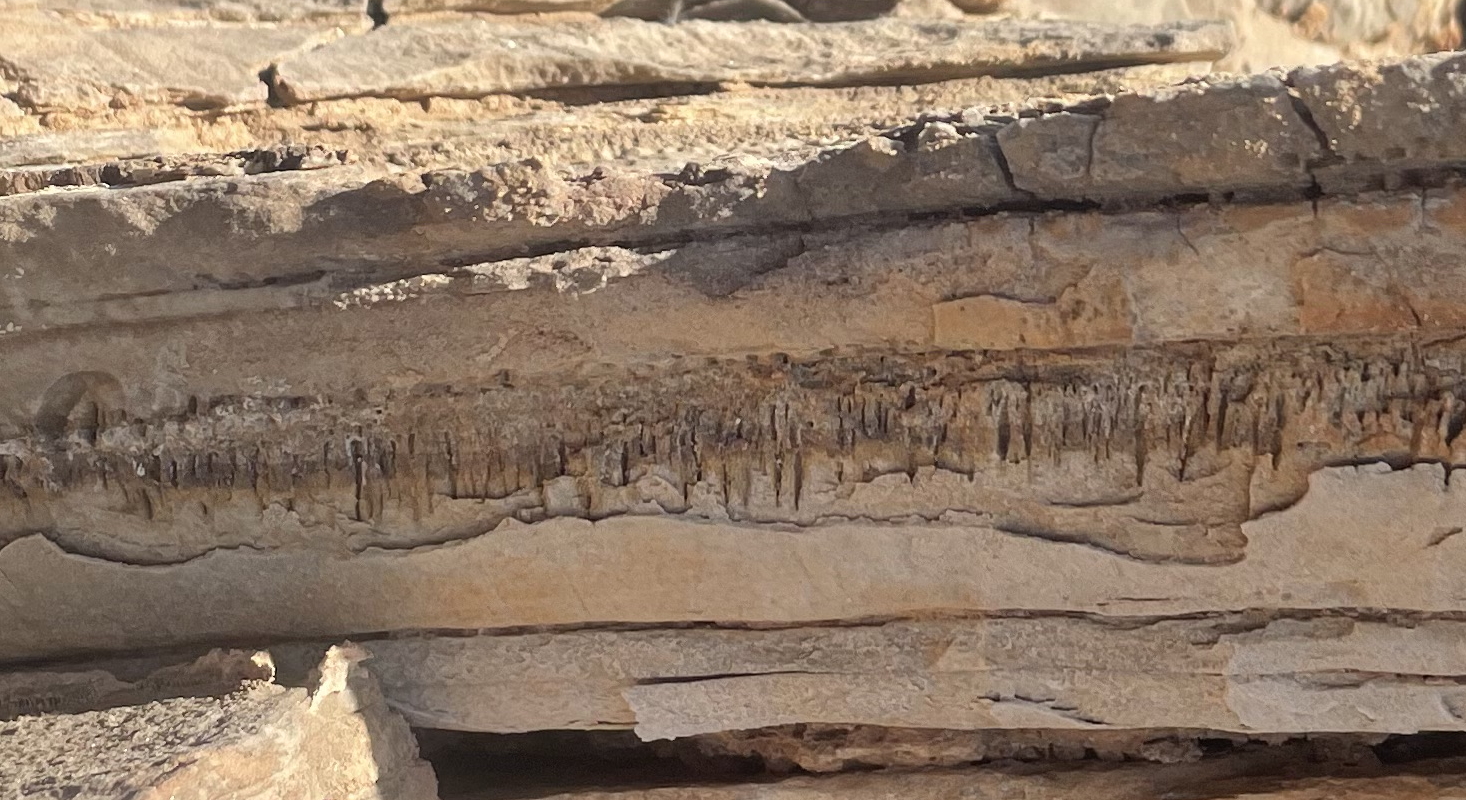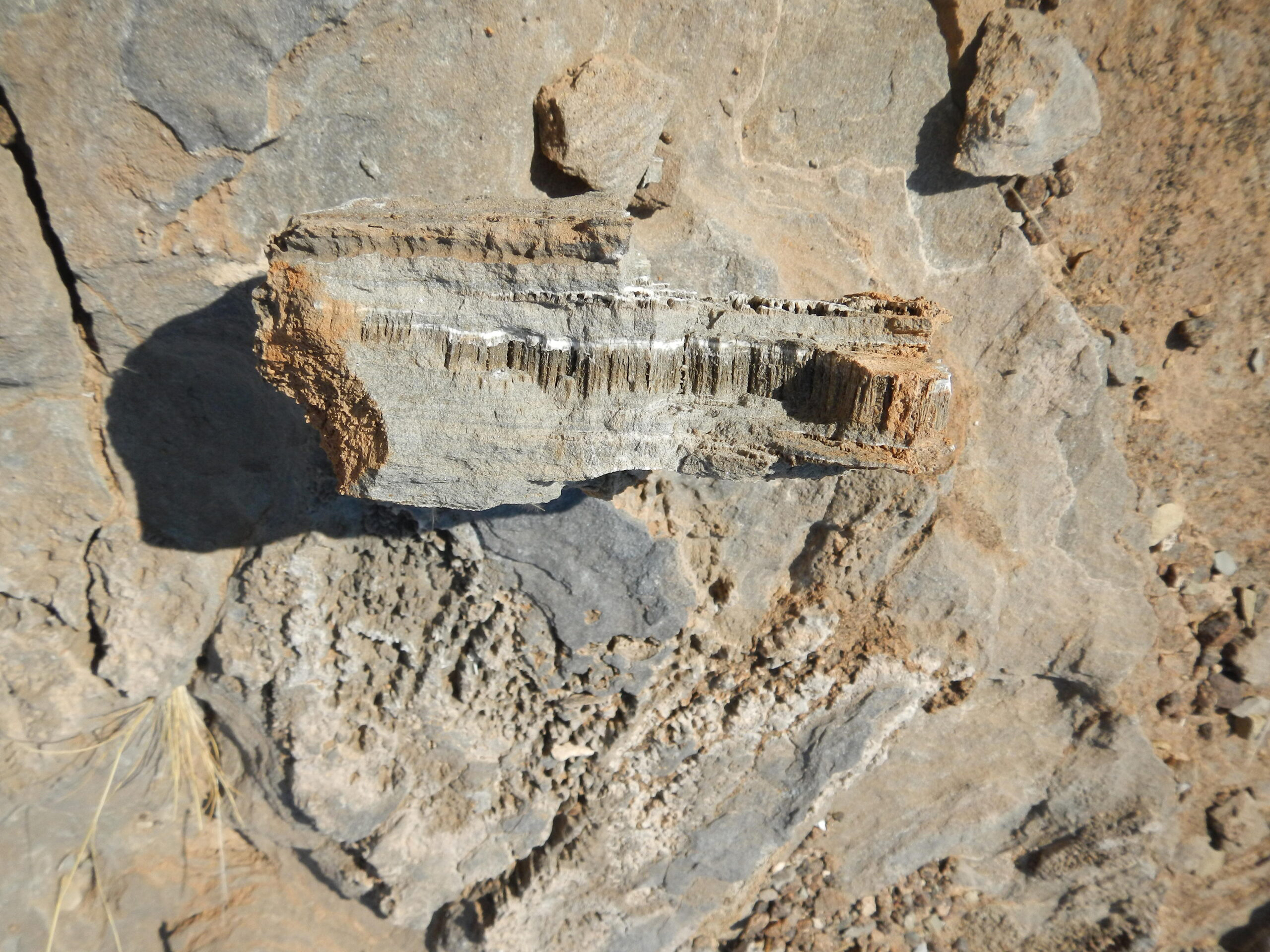Strange, tiny structures have been found in the rocks around the deserts of southern Africa and the Arabian Peninsula. Scientists are now confident that these unusual formations were not made by a geological process, but by a mysterious lifeform that remains unknown.
ADVERTISEMENT
The structures are known as micro-burrows, unusual tube-like tunnels – about half a millimeter wide and up to 3 centimeters long – found in the marbles and limestones of certain deserted regions.
They were first identified around 15 years ago by Professor Cees Passchier from Johannes Gutenberg University Mainz during geological fieldwork in Namibia, southern Africa. He then found very similar structures in the marble of Saudi Arabia, as well as the limestone of Oman.
Upon further investigation with his colleagues, he found evidence of biological material in and around the micro-burrows, indicating that microorganisms had created the unusual dugouts within the rock.
“We were surprised because these tubes are clearly not the result of a geological process,” Professor Passchier, first author of a new study on the micro-burrows, said in a statement.

Band of heavily eroded micro-burrows that had been exposed to the surface.
Image credit: ©Cees Passchier
Microbes that colonize the interior of rocks are known as endoliths, derived from the Greek words for “inside rock”. They are not uncommon in deserts and other extreme environments as they can obtain their energy and nutrients from inside the rocks. There are endolithic blue-green algae living under the surface of rocks in the dry valleys of southern Victoria Land in Antarctica, as well as similar algae organisms living in limestone found in the baking hot deserts of Israel and California.
Inside the Namibian micro-burrows, the team identified the presence of powdery calcium carbonate, the main “ingredient” of marble. They believe that the mystery microorganisms may have burrowed into the marble to extract nutrients present in the calcium carbonate, leaving behind this powder.
ADVERTISEMENT
However, the team is clueless about what kind of organism could have created these tunnels, whether they’re bacteria, lichen, fungi, or another form of life. Unfortunately, the researchers were unable to obtain any traces of no DNA or proteins because the specimens were too old, perhaps up to 2 million years old.
“We don’t currently know whether this is a life form that has become extinct or is still alive somewhere,” added Passchier. “What is so exciting about our discovery is that we do not know which endolithic microorganism this is. Is it a known form of life or a completely unknown organism?”
“In any case, these are old structures, perhaps one or two million years old. We assume that they were formed in a slightly more humid climate, not in the dry desert climate that prevails today,” said Passchier.

Marble from Namibia in which micro-burrows have grown in parallel arrangement downwards from a fracture filled with white calcium carbonate.
Image credit: ©Cees Passchier
Finding the culprit could have some big implications for the global carbon cycle, as these microorganisms may play a previously unknown role in breaking down carbonate minerals, influencing carbon storage and release in Earth’s ecosystems.
ADVERTISEMENT
“This form of life, of which we do not know whether it still exists, could be important for the global carbon cycle. It is therefore essential that the scientific community becomes aware of it,” concluded Passchier.
The study is published in the Geomicrobiology Journal.
Source Link: An Unknown Lifeform Made Structures In Namibian Desert Rock Over A Million Years Ago